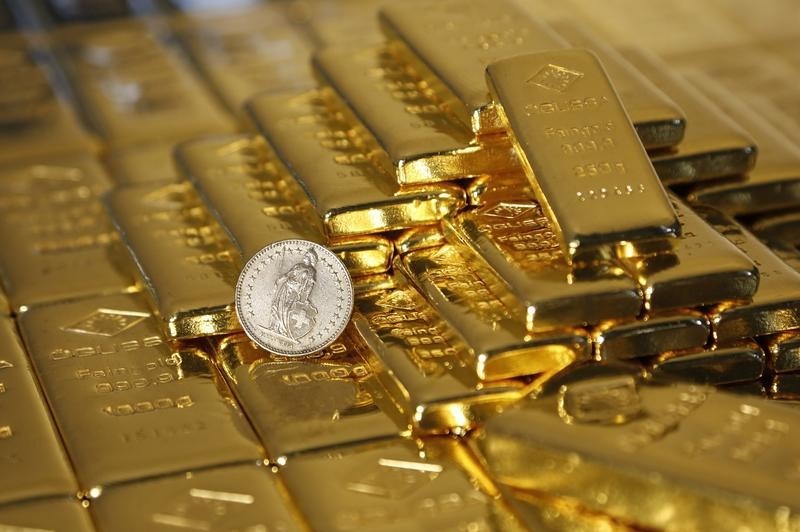By Ambar Warrick
Investing.com -- Gold prices rose slightly from a one-month low on Tuesday, but saw little trading action as investors kept to the sidelines ahead of more economic cues from U.S. consumer inflation data due later in the day.
Most other metal prices also stuck to tight trading ranges, while the dollar steadied amid fears that inflation could surprise to the upside, inviting more interest rate hikes by the Federal Reserve.
Spot gold rose 0.1% to $1,855.58 an ounce, while gold futures rose 0.1% to $1,865.95 an ounce by 19:32 ET (00:32 GMT). Both instruments weakened on Monday as markets turned volatile in anticipation of the consumer price index reading.
The data is expected to show that while inflation eased further in January from the prior month, it is still expected to remain at relatively high levels. This trend could potentially give the Fed enough impetus to maintain its hawkish rhetoric.
Gold prices were battered by rising interest rates in 2022, as the opportunity cost of holding non-yielding assets rose in tandem with U.S. Treasury yields. While the yellow metal did see some respite in the first few weeks of 2023, resurgent fears of the Fed reversed a bulk of gold’s recent gains.
A spike in short-term Treasury yields also pressured bullion prices in recent sessions, as did a recovery in the dollar, which hovered near a one-month high against a basket of currencies. The greenback fell slightly on Tuesday amid some profit taking.
Other precious metals were also muted on Tuesday. Platinum futures rose 0.1% to $961.15 an ounce, while silver futures steadied around $21.992 an ounce.
Among industrial metals, copper prices retreated after strong gains in the prior session, as traders continued to weigh the prospect of a Chinese demand recovery against fears of a global recession this year.
High-grade copper futures fell 0.1% to $4.0585 a pound, after rallying over 1% in the prior session.
The red metal has marked volatile swings in recent weeks amid mixed signals on an economic recovery in China, the world’s largest importer of the metal.
But fears of a slowdown in other major economies have provided a major headwind to prices, particularly signs of slowing industrial activity in the U.S. and the euro zone.
